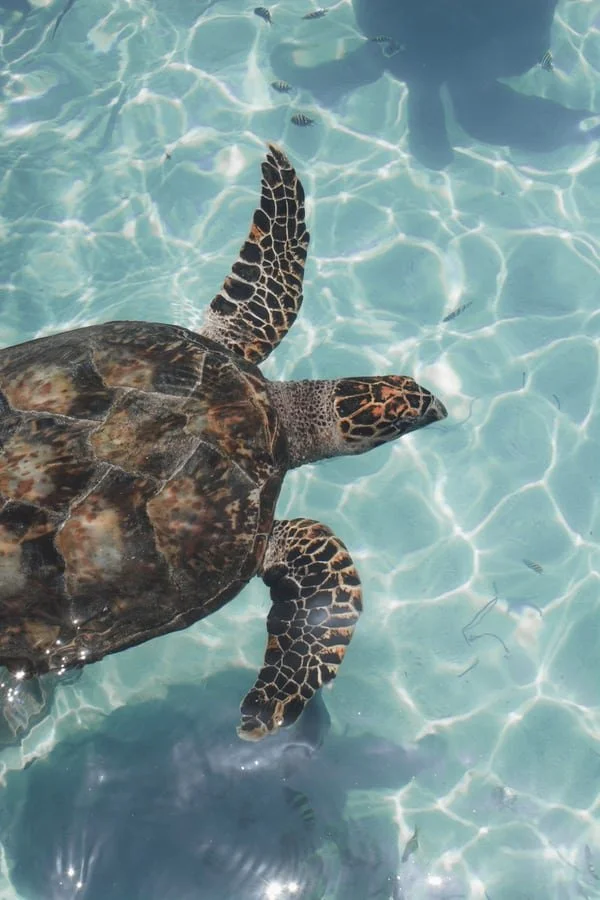Marine Microplastics - A Macro Problem
Writes Aoife GleesonPlastic has to be the best invention that mankind has ever made, right? I mean it is super cheap and easy to produce, has literally millions of uses, and is both strong and durable but crucially lightweight. So, this has to be a “super-material”? Plastics were first produced commercially in the 1970s and has since quickly led to a 245 million tonne demand worldwide today. However, we are increasingly seeing the negative effects of this “super-material” in the world. During one of my first lectures as a student of environmental science, we were shown a rather disturbing image of a fish with the middle of its body so narrow and tight from entanglement in a plastic ring that it was impossible for that fish to feed. This stark image is unfortunately the reality that marine life is facing today. We are all aware at this stage of the brutal reality of macroscopic plastics through distressing images like this. However, an even bigger problem that not many people are aware of is the huge impact of the marine plastics that we cannot see…microplastics.Microplastics in marine environments easily outnumber the plastics that we can see with the naked eye. For a bit of perspective, microplastics are around 0.06mm - 0.5mm in diameter which is about the same size as a single raindrop and usually arise from two different sources. The first of which are the purposely manufactured microplastics less than 1mm in size. These include cosmetic microbeads found in items like exfoliating skincare products, abrasives for removing household paint, boat antifouling materials, and even microspheres in medicine. The other situation where microplastics arise from is the breakdown and subsequent fragmentation of larger plastics that inevitably end up in our oceans. These plastics are broken down into microplastics through biological and physical degradation, and through the process of photo-oxidation, where the chemical forces holding the plastic molecules together are broken down by the presence of sunlight and oxygen. Other sources of marine microplastics include sewage waters containing fibres from washing clothes, and accidental industrial spillages that can contain plastic pellets and powders. Regardless of how microplastics are formed, one thing is for certain…they are quickly becoming a macro-problem for our marine environment.It is estimated that plastic debris in general affects about 267 species globally, with the majority of these species located in our precious oceans. In fact, up to 80% of microplastics found here originally came from land-based sources. The intensive production and large volumes of plastic found worldwide has inevitably caused microplastic debris to become a pervasive marine pollution problem today, with detrimental impacts for marine life. Ingestion of microplastics by marine species are one of the most common impacts of this pollution. Microplastics closely resemble marine food sources, such as plankton, due to similarity in size, colour, and even smell. A consequence of this is that the stomach of the marine organism becomes ‘blocked’. It dies from a lack of food intake and a subsequent decrease in the amount of nutrients absorbed, resulting from the plastic making the organism feel full all the time (it remains fully intact in its stomach). In other words, it is so full from eating microplastics that it doesn’t feel the need to feed which is obviously very bad! So, when you see a campaign on social media about how certain marine organisms are ‘starving’ to death from microplastics, think again.A knock-on effect of this reduction in food intake is that less energy is now available to the organism. This means that the organism’s body will allocate what little energy is left to keep itself alive, rather than concentrate on maintaining good quality fertility levels or on finding a mate to reproduce. Eventually, a notable decline in the species’ population will ensue causing them to become endangered and even extinct if microplastic pollution continues uncontrollably. Not only do microplastics have an impact on individual species, but also on many marine food chains. Through predation, the problem of microplastic pollution can easily spread up the food chain and can unwittingly lead to its consumption by humans. We are at the top of the marine food chain after all. Furthermore, the chemical contents of many microplastics act as endocrine disruptors in many marine organisms. These affect a range of internal biological processes, such as a reduced metabolism. Marine microplastics can also stick to the outside of tiny organisms, like algae, blocking light which is what they use to make their own food through the process of photosynthesis. The majority of marine organisms feed on algae, and a reduction in the number of algae available can contribute to the elimination of some food chains. This can eventually cause entire marine ecosystems to be wiped out.These many impacts are just a small sample of the plethora of harmful and disruptive effects of microplastics on marine life. No region of Earth is safe from these effects, with microplastics even found in both The Arctic and Antarctica. It is now a regular occurrence to find microplastics in the stomachs of many marine species, with 89.5% of the stomach content of seabirds studied in the Washington and Oregon coasts consisting of both macro and microplastic particles. How could we have been so negligent to our precious marine ecosystems? We need to acknowledge that plastics are not the best invention that mankind has ever made. We need to understand that microplastics are indeed a serious macro-problem. We need to ensure that when asked what is found in the oceans, the children of the future do not give “plastic” as their first answer.


